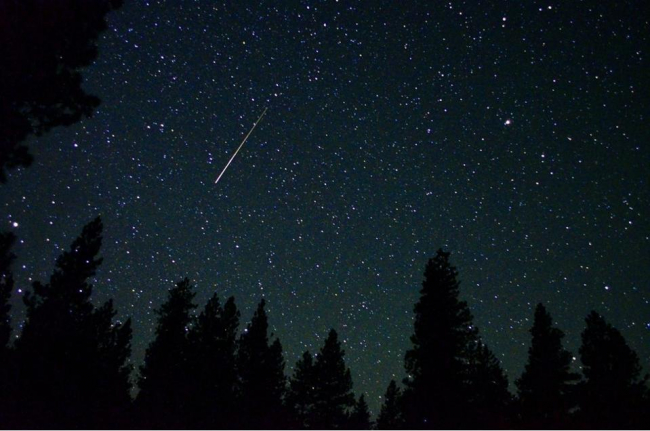247-25-000377-TA - Dark Skies Text Amendments

Background
Many local governments in the United States have enacted what is popularly called a Dark Skies Ordinance, requiring that most outdoor lighting face downward to the ground in an effort to reduce light pollution, which has a detrimental effect on astronomical observations and public enjoyment of the night sky. DarkSky International (formerly the International Dark-Sky Association) currently lists over 100 US jurisdictions that have been designated as Dark Sky communities, parks, or reserves as of 2025. Support for the benefits of dark skies and the adoption of dark sky legislation has been expressed by policymakers, designers, public safety professionals, wildlife biologists, and land use planning entities across the country. Updating lighting regulations to improve dark skies has been a consistent theme of Board, Planning Commission, citizen, and panel discussion on this topic.
Since November 2021, both the Board of County Commissioners and Planning Commission have expressed support for updating DCC Chapter 15.10, Outdoor Lighting Control, which was adopted in 1994. Staff convened two panels on the topic in 2022 and 2023; the proposed amendments utilize input from those panels to inform the amendments.
In addition to the proposed code amendments, staff will initiate public education efforts as a separate but related process aimed at educating County residents and visitors about dark sky principles. Dark Sky educational resources typically include example designs of dark sky-supportive outdoor lighting fixtures, tips for working independently with neighbors to resolve outdoor lighting issues, and a summary of dark sky benefits as related to local resources.
Proposal Summary
Any new regulations must balance the effectiveness of the code against the public and private costs to operate and enforce the program. Notably, implementation and enforcement are significant challenges. Plan reviewers and building inspectors do not have the capacity to review or inspect outdoor lighting fixtures, and there is limited capacity for the Code Enforcement Division to review outdoor lighting violations. As a result, the proposed amendments seek to simplify the code wherever possible while still supporting responsible lighting practices. The proposed code also includes guiding principles for effective and responsible lighting that are not intended to be mandatory approval criteria.
The proposed streamlined code takes the challenges of enforcement and implementation into consideration, while addressing concerns that have been raised by experts and the public over the last several years. The full draft code can be found under "Application Materials" below.
- Definitions: Definitions, which previously utilized a separate section for each term, have been consolidated into a single section, and superfluous or outdated definitions (for instance, those defining certain types of light fixtures that are no longer referred to in the chapter) have been removed. New definitions have been provided for several terms, most notably “downcast,” “light trespass,” and “string lights.”
- Purpose statement: This statement has been revised utilizing input from a DarkSky representative to reflect the need for lighting practices that are both safe and responsible, recognizing the County’s night sky as an economic and community natural resource.
- Guiding principles: These principles, based on those from DarkSky International, have been added and are not intended to be mandatory. However, recognizing the limitations of enforcement, guiding principles can provide applicants with best practices for responsible lighting concepts.
- Primary requirements: DCC 15.10.050 presents three requirements applicable to all non-exempt outdoor light fixtures: lights must be downcast, fully shielded, and light trespass is prohibited. The proposed amendments remove distinctions between—and tables referring to—different types of bulbs/fixtures and wattage in favor of a simplified approach that is easier to implement and enforce. During the panel discussions, this simplification was acknowledged as a potentially effective strategy that recognizes the limitations of implementation and enforcement and that is easy to understand.
- Prohibitions (formerly DCC 15.10.150) and externally lighted advertising signs (formerly DCC 15.10.160): Both of these sections were deleted, with some language moved to DCC 15.10.060, Exemptions. Both contained redundant references to lighting that must conform to the shielding requirements that apply to all non-exempt fixtures (for instance, top mounted fixtures for advertising signs). Provisions for searchlights, recreational facilities, and bottom mounted advertising lighting were moved to DCC 15.10.060 Exemptions, which more accurately captures the criteria for these types of light fixtures.
- Exemptions: The proposed amendments clarify some existing exemptions and add others (see above). The amendments remove several exemptions that would now be subject to the requirements of DCC 15.10.050, including correctional institutions, historical areas, and motion detector lights. The amendments add exemptions for string lights, publicly owned lighting including streetlights, and searchlights.
Proposal Status & Public Hearing Information
A public hearing was held before the Board of County Commissioners on Wednesday, August 27. After testimony was received, the Board closed the public hearing and written record, deliberated, and directed staff to return with final amendments for approval. The final amendments were presented in ordinance form before the Board on September 10 with minor changes discussed during deliberations. Second reading is scheduled for Wednesday, September 24, with an effective date of December 23, 2025. Subsequently, staff will work to coordinate strategies for outreach and coordination with stakeholders throughout the County.
After conducting an initial public hearing on July 10, the Planning Commision closed the hearing and left the written record open until July 16, 2025. The Planning Commission conducted deliberations at its regular meeting on July 24, 2025, issuing a recommendation to the Board of County Commissioners.
Remote attendance information for all public hearings, including specific start times for agenda items, can be found at www.deschutes.org/meetings approximately one week prior to each meeting. Videos of past meetings are available at the same link.
To share this page with others use the shortened link (case sensitive): https://bit.ly/DeschutesDarkSkies
Staff Contact
Tanya Saltzman, Senior Planner - Long Range
tanya.saltzman@deschutes.org
(541) 388-6528
